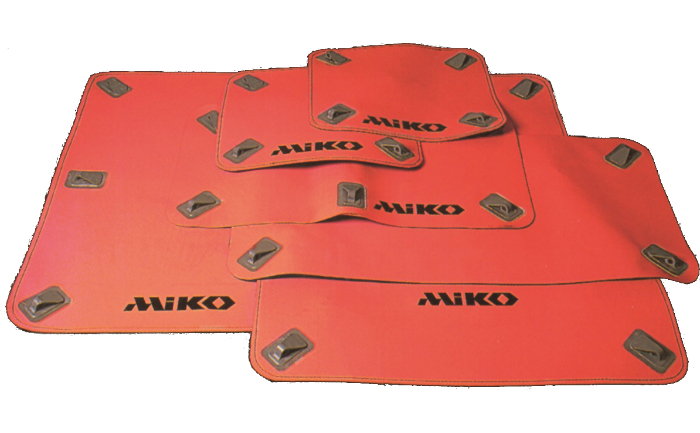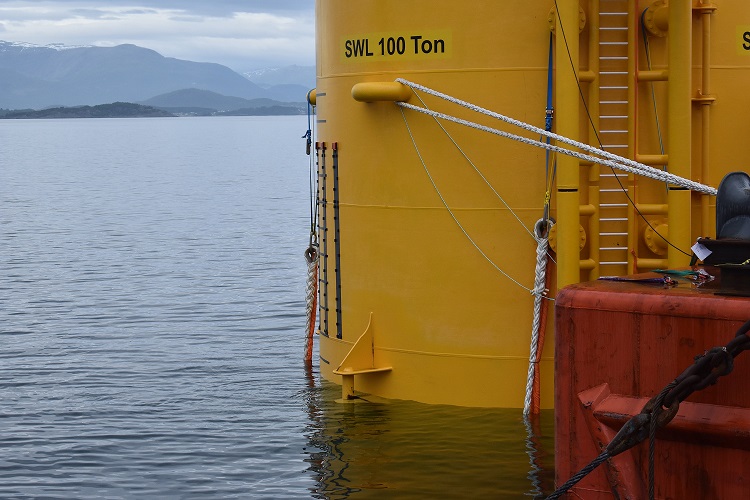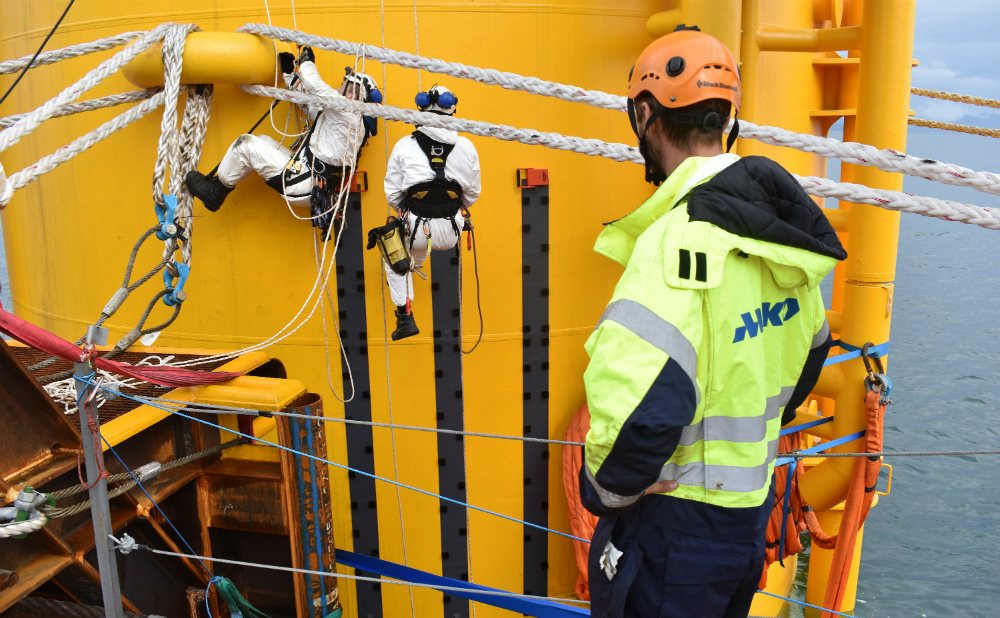A scientific study of fouling growth on the new Hywind floating turbine structures will be aided by the use of magnetic patches supplied by Miko.
With construction of the world’s first floating wind farm currently in progress off the Scottish coast near Peterhead, a unique method of monitoring biological growth is due to be conducted by the Scottish Marine Institute on behalf of farm operators; Statoil and Masdar. Magnetic patches measuring 3500mm x 200 mm will be fixed to the underwater surface of the floating turbine spar where they will experience the same degree of biological growth as the main hull. At intervals of around four months, the patches can be simply peeled-off and returned to the laboratory where the composition and extent of any growth can be measured with exceptional accuracy.
Advantages with magnetic patches
This is seen as a simple but important advance over traditional methods of fouling assessment which usually employ either in-situ measurement by divers or ROV, or by the use of a removable plate that can be recovered for laboratory analysis. On site measurement is considerably less accurate while removable plates must be fitted inside custom-made mounting structures which offer fewer siting options. This is not a problem with magnetic patches which will make it possible to monitor the extent of growth in relation to its depth on the structure and its orientation in relation to light, currents and water temperature.
The Miko magnetic patches are manufactured in Norway and are more typically used for the emergency repairs of damaged ships or offshore platforms. Each patch consists of high strength fabric backed by a powerful and flexible magnetic layer. Lifting points are included for ease of handling by divers or ROVs and they have a life expectancy of many years of demanding use. The power of the magnetic adhesion enables them to withstand the effects of wave and current action and ensure that the patch stays in place regardless of sea conditions. The first phase of the wind farm will cover around 4 square kilometres 25 km offshore Peterhead where the average wind speed is around 10 metres per second.




